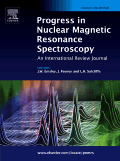
PROGRESS IN NUCLEAR MAGNETIC RESONANCE SPECTROSCOPY
Scope & Guideline
Exploring the Depths of Spectroscopic Science
Introduction
Aims and Scopes
- Advanced NMR Methodologies:
The journal emphasizes innovative NMR methodologies, including solid-state NMR, ultrafast techniques, and hyperpolarization methods, which are crucial for improving sensitivity and resolution in spectroscopic studies. - Biomolecular and Metabolomic Applications:
A significant scope of the journal involves the application of NMR in biomolecular studies, particularly in understanding protein dynamics, ligand interactions, and metabolomics, thereby contributing to advancements in biochemistry and medicine. - Materials Science and Engineering:
Research related to the application of NMR in materials science, including studies on ionic liquids, battery electrolytes, and zeolite chemistry, highlights the journal's commitment to interdisciplinary research. - Clinical and Diagnostic Applications:
The journal showcases research utilizing NMR in clinical settings, such as magnetic resonance elastography and metabolic imaging, which are essential for disease detection and monitoring. - Quantum Computing and NMR:
The exploration of NMR techniques in the context of quantum computation represents a unique and forward-thinking aspect of the journal, bridging the gap between spectroscopy and quantum technologies.
Trending and Emerging
- Hyperpolarization Techniques:
Recent publications increasingly focus on hyperpolarization methods, which significantly enhance the sensitivity of NMR experiments, thus opening new avenues for metabolic and biomolecular research. - Integration of NMR with Other Techniques:
There is a growing trend towards combining NMR with microfluidics, imaging, and electron paramagnetic resonance (EPR), which allows for more comprehensive analyses of complex biological and material systems. - NMR in Clinical Applications:
An uptick in studies applying NMR to clinical diagnostics and imaging suggests a strong interest in translating NMR technology into practical healthcare solutions, particularly in the context of disease detection and monitoring. - Quantum Applications of NMR:
Research exploring the application of NMR techniques in quantum computing is on the rise, indicating a novel intersection of fields that could lead to significant advancements in both spectroscopy and quantum technologies. - Metabolomics and Biomolecular Profiling:
The journal is increasingly publishing studies focused on metabolomics and profiling biological samples, reflecting a broader interest in understanding metabolic pathways and disease mechanisms.
Declining or Waning
- Traditional NMR Techniques:
While foundational NMR methods remain important, there is a noticeable decline in publications focusing solely on conventional techniques, as researchers increasingly explore advanced methodologies and hybrid approaches. - Static NMR Studies:
The prevalence of studies using static NMR setups has decreased, likely due to the growing interest in dynamic and time-resolved techniques that provide more comprehensive insights into molecular behavior. - Basic NMR Theory and Fundamentals:
Papers centered on basic theoretical frameworks of NMR are less frequent, as the journal shifts towards applied research and innovative applications that push the boundaries of existing knowledge.
Similar Journals

CONCEPTS IN MAGNETIC RESONANCE PART A
Fostering Global Collaboration in Magnetic ResonanceCONCEPTS IN MAGNETIC RESONANCE PART A, an esteemed journal published by Wiley-Hindawi, stands as a pivotal platform in the field of spectroscopy since its inception in 2002. With an Open Access model implemented in 2019, this journal allows for the broad dissemination of research findings, fostering collaboration and innovation among researchers, professionals, and students globally. While it currently holds a quartile ranking of Q4 in Spectroscopy, it aspires to provide a comprehensive collection of original research and review articles that address significant advancements and methodologies in magnetic resonance. Its unique focus invites contributions that enhance understanding and application of imaging techniques, thereby playing a vital role in bridging theoretical concepts to practical applications in chemistry. Boasting an ISSN of 1546-6086 and an E-ISSN of 1552-5023, it continues to encourage the exchange of ideas and data among the scientific community within the United States and beyond, based in the historic Adam House in London.

JOURNAL OF MAGNETIC RESONANCE
Illuminating the Path of Nuclear and High Energy PhysicsThe JOURNAL OF MAGNETIC RESONANCE, a leading peer-reviewed publication from ACADEMIC PRESS INC ELSEVIER SCIENCE, serves as a vital platform for disseminating cutting-edge research in the fields of biochemistry, biophysics, and condensed matter physics. With an ISSN of 1090-7807 and an E-ISSN of 1096-0856, this journal is committed to publishing innovative studies that explore the principles and applications of magnetic resonance techniques. Ranking in the Q3 and Q2 quartiles across various categories in 2023, it reflects a robust standing within the academic community, especially noted for its contributions to nuclear and high energy physics where it ranks 29th out of 87 journals. The journal's comprehensive scope and emphasis on accessible research make it an essential resource for researchers, professionals, and students alike, facilitating advancements in both theoretical and practical aspects of magnetic resonance. With conversion years spanning 1997 to 2024, the journal continues to uphold its legacy as a cornerstone of knowledge in the best practices of scientific research.
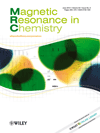
MAGNETIC RESONANCE IN CHEMISTRY
Navigating the Complexities of Magnetic Resonance in ChemistryMAGNETIC RESONANCE IN CHEMISTRY, published by Wiley, is a prominent journal dedicated to the advancement of knowledge in the field of magnetic resonance as applied to chemistry and materials science. With an ISSN of 0749-1581 and an E-ISSN of 1097-458X, this journal has been an essential resource for researchers since its inception in 1985, maintaining its reputation as a leading publication through its converged years up to 2024. Spanning diverse topics, the journal holds a Q2 quartile ranking in both the Chemistry (miscellaneous) and Materials Science (miscellaneous) categories, illustrating its significance in the academic community. With Scopus rankings placing it in the 61st percentile for General Chemistry and the 55th percentile for General Materials Science, this journal is an esteemed platform for original research, reviews, and critical discussions surrounding magnetic resonance methodologies and applications. As access options are not open, it ensures a curated dissemination of high-quality, peer-reviewed content to support professionals, researchers, and students in their scholarly endeavors.
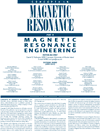
CONCEPTS IN MAGNETIC RESONANCE PART B-MAGNETIC RESONANCE ENGINEERING
Advancing Magnetic Resonance Engineering for a Healthier Tomorrow.CONCEPTS IN MAGNETIC RESONANCE PART B-MAGNETIC RESONANCE ENGINEERING is a premier journal published by WILEY-HINDAWI, dedicated to advancing the field of magnetic resonance engineering. With an ISSN of 1552-5031 and E-ISSN 1552-504X, this journal offers an Open Access platform since 2022, ensuring that research is freely accessible to scholars worldwide. Covering a broad spectrum of applications in medicine, radiology, nuclear medicine, and imaging, it serves as a key resource for professionals looking to stay updated with the latest advancements and innovations in the field. The journal enjoys notable rankings in various categories, including a rank of #137 in Medicine and #26 in Health Professions within Scopus, reflecting its importance and influence in both academic and clinical settings. As a vital conduit for cutting-edge research, CONCEPTS IN MAGNETIC RESONANCE PART B is committed to fostering the growth of knowledge while addressing the critical challenges and technological enhancements within magnetic resonance methodologies. Researchers, professionals, and students can expect to find comprehensive articles that adhere to high scientific standards, promoting discourse and collaboration across disciplines.

Journal of Structural Biology-X
Unlocking the Secrets of Structural BiologyThe Journal of Structural Biology-X, published by Elsevier, is a leading open-access journal dedicated to advancing the field of structural biology. Launched in 2019, it has quickly established itself as a vital resource for researchers, professionals, and students, boasting a prestigious Q1 ranking in Structural Biology for 2023 and achieving an impressive Scopus rank of #19 out of 49 in the biochemistry, genetics, and molecular biology category. With an E-ISSN of 2590-1524, this journal emphasizes accessibility and collaboration by providing open access to its comprehensive collection of research articles, reviews, and cutting-edge methodologies. The scope of the journal encompasses significant themes within structural biology, including protein structure, molecular interactions, and imaging techniques, facilitating interdisciplinary dialogue and innovation. Join the global community of scientists and contribute to the body of knowledge that propels our understanding of molecular architecture through the Journal of Structural Biology-X.

MAGNETIC RESONANCE MATERIALS IN PHYSICS BIOLOGY AND MEDICINE
Innovating Interdisciplinary Insights in Physics, Biology, and MedicineMAGNETIC RESONANCE MATERIALS IN PHYSICS BIOLOGY AND MEDICINE, published by SPRINGER, is a premier academic journal dedicated to advancing the fields of biophysics, radiology, and medical imaging. With a strong presence in Germany and an international readership, this journal has established itself as a vital resource for researchers and professionals engaged in the interdisciplinary study of magnetic resonance applications. Featuring a commendable 2023 impact factor and categorized in Q2 quartiles across several domains—including Biophysics and Radiological Technologies—this journal provides a platform for innovative research and practical implementations in the field. Although it does not follow an Open Access model, it offers extensive archives dating back to 1984, affirming its long-standing commitment to scholarly excellence. The journal not only ranks impressively within Scopus metrics, but it also promotes ongoing discourse that bridges gaps between physics, biology, and medicine, making it an essential read for professionals and students aiming to stay informed about cutting-edge developments.

JOURNAL OF BIOMOLECULAR NMR
Advancing molecular insights through spectroscopy.JOURNAL OF BIOMOLECULAR NMR, published by SPRINGER, is a leading academic journal dedicated to advancing the field of molecular spectroscopy, particularly in the realm of biomolecular studies. With an ISSN of 0925-2738 and an E-ISSN of 1573-5001, the journal has been consistently publishing high-quality research since its inception in 1991, and continues to do so through 2024. The journal maintains an impressive reputation within its category, achieving a Q2 ranking in Biochemistry and a Q1 ranking in Spectroscopy as of 2023, reflecting its commitment to excellence and innovation in scientific research. Notably, it ranks 26th in Scopus for Chemistry - Spectroscopy and 198th for Biochemistry, indicating its significance in the scholarly community. Although it operates under a traditional access model, the journal serves as an essential resource for researchers, professionals, and students interested in the molecular nuances of biomolecules, offering insights that drive advances in biochemistry and related disciplines.
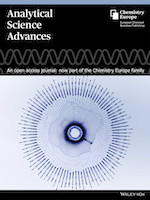
Analytical Science Advances
Transforming Analytical Chemistry Through High-Quality ResearchAnalytical Science Advances is a dynamic journal published by WILEY, dedicated to the ever-evolving field of analytical chemistry. With an ISSN of 2628-5452, this open-access platform aims to disseminate high-quality research and insightful reviews that push the boundaries of analytical methodologies and instrumentation. Since its inception in 2020, the journal has gained traction, securing a commendable Q2 ranking in 2023 within its category, highlighting its significance in the scientific community. Currently positioned at Rank #68 out of 156 in Scopus' analytical chemistry category, it boasts a 56th percentile ranking, reflecting its contributions to advancing analytical techniques. Researchers, professionals, and students will find this journal an invaluable resource for keeping abreast of the latest developments, emerging technologies, and innovative approaches in analytical science, ensuring the journal's relevancy and influence in shaping future discoveries.
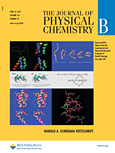
JOURNAL OF PHYSICAL CHEMISTRY B
Connecting Science and Innovation in Physical ChemistryJournal of Physical Chemistry B, published by the American Chemical Society, is a leading international platform dedicated to advancing our understanding of physical chemistry and its applications in various interdisciplinary fields. With an impressive 2023 Impact Factor, and categorized in Q1 for Physical and Theoretical Chemistry as well as Surfaces, Coatings and Films, this journal showcases cutting-edge research that contributes significantly to materials science, supporting the innovative development of new materials and technologies. The journal, established in 1997 and converging its years of publication to 2024, maintains rigorous peer-review standards and is accessible to a global audience, enabling the dissemination of pivotal research findings. Moreover, it is renowned for its comprehensive coverage in the realms of materials chemistry and miscellaneous medical applications, making it a vital resource for researchers, professionals, and students alike in their pursuit of excellence in scientific inquiry.
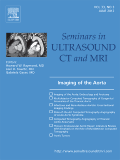
SEMINARS IN ULTRASOUND CT AND MRI
Elevating Standards in Ultrasound and ImagingSEMINARS IN ULTRASOUND CT AND MRI is a prestigious academic journal dedicated to advancing the fields of radiology, nuclear medicine, and imaging. Published by W B SAUNDERS CO-ELSEVIER INC, this journal has been a cornerstone of scholarly communication since 1984, providing a platform for high-quality research and review articles that enhance the understanding of diagnostic imaging techniques. With a current impact factor reflected in its Q3 quartile ranking among 333 journals in its category, it remains a valuable resource for researchers and clinicians alike. The journal's focus includes but is not limited to innovations in ultrasound, computed tomography, and magnetic resonance imaging, making it essential for professionals looking to stay at the forefront of imaging science. While it operates under a subscription model, its extensive archive of influential articles ensures ongoing access to critical knowledge and developments in the field. With a commitment to quality and relevance, SEMINARS IN ULTRASOUND CT AND MRI continues to contribute significantly to the evolving landscape of medical imaging.